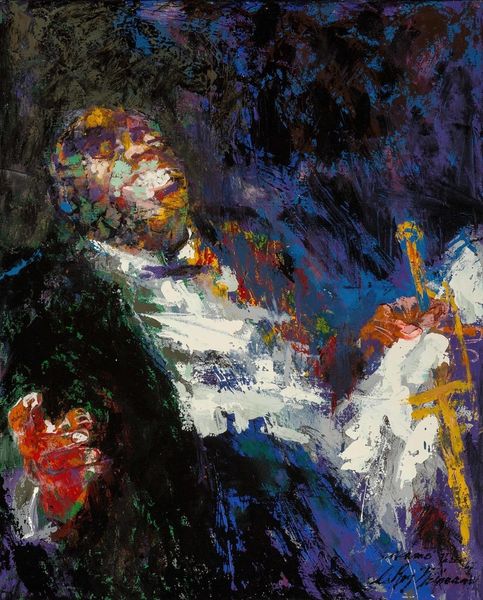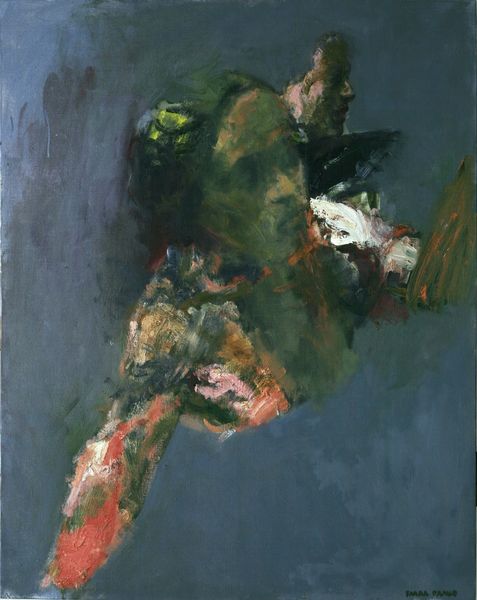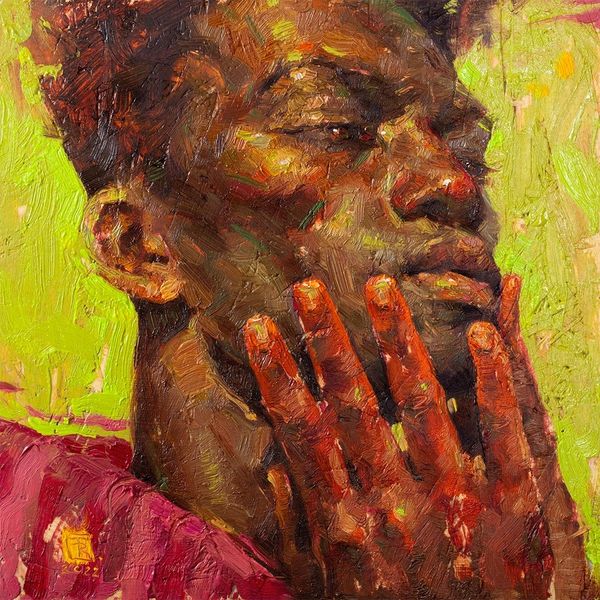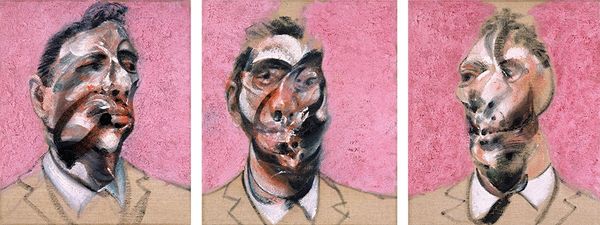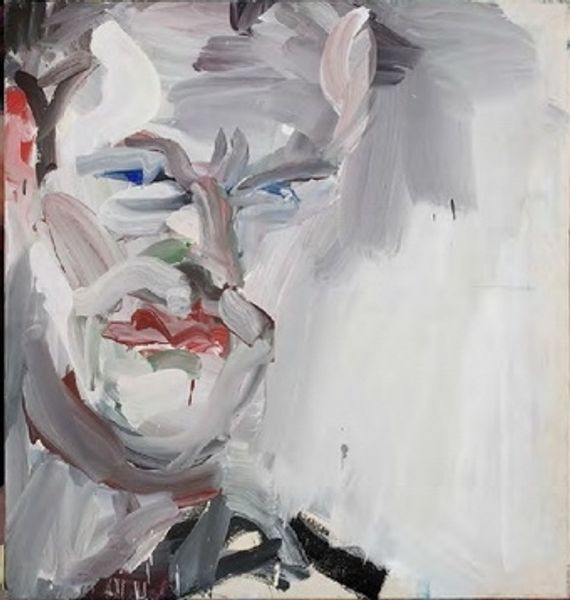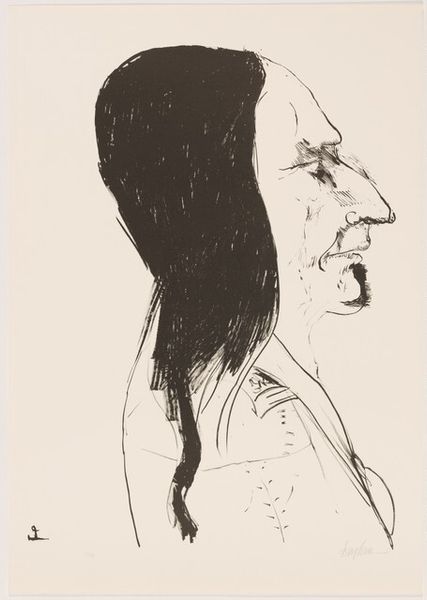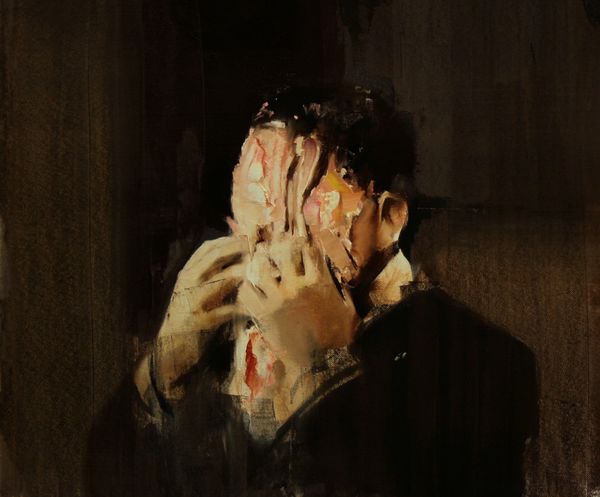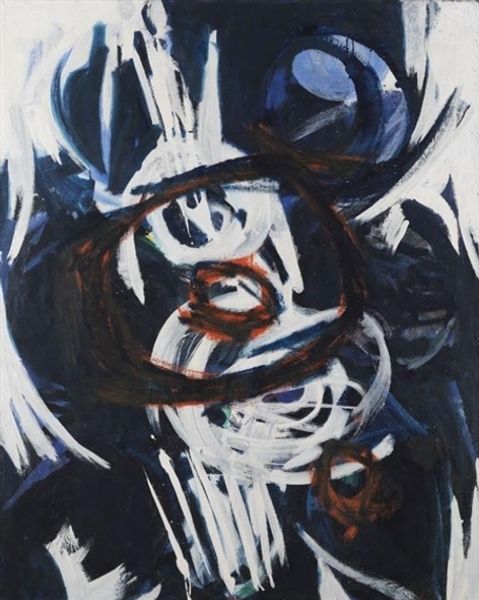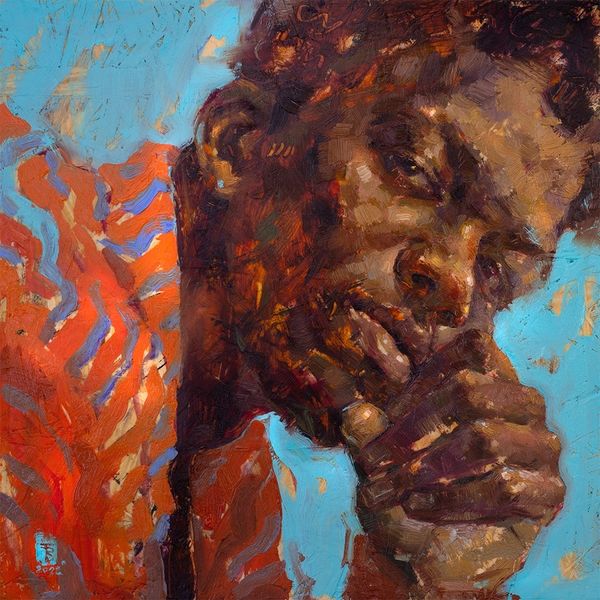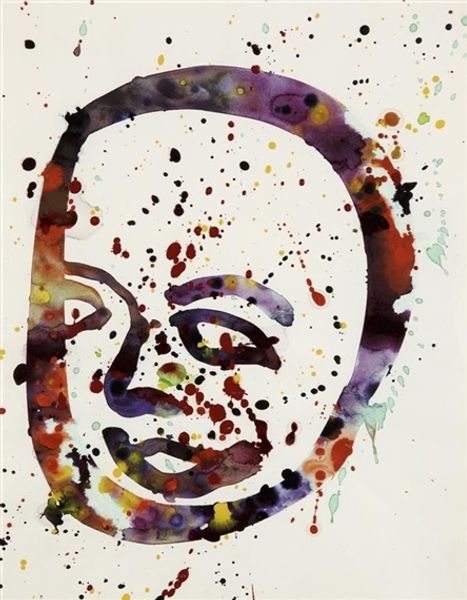
Dimensions: 35.5 x 30.5 cm
Copyright: Francis Bacon,Fair Use
Editor: So, this is Francis Bacon's "Study for Head of George Dyer," painted in 1967. The oil paint application is intense. It feels viscerally expressive, almost painful to look at. What’s your interpretation of it? Curator: Well, consider Bacon's wider context. Post-war Britain, a society grappling with existential anxieties, social upheaval… Bacon channels that. Think about the role of the art world, too. What kind of imagery gains traction? And what is the political drive that pushes this imagery? Editor: So, it's less about Dyer specifically and more about Bacon using him as a vehicle for broader social commentary? Curator: Exactly! It is about the politics of looking at art, the discomfort the art makes, and why Bacon would distort the face in this particular way to convey anxieties present during the rise of art informel. Editor: Right. I’d never really considered the art market influencing expressionism so directly, though it makes sense when you think about galleries curating for shock. What about the artistic conventions that Bacon follows or disregards in this kind of expressive portraiture? Curator: What traditions *should* Bacon respect? Is there an unsaid agreement with an audience of modern art to bend away from old conventions? Are paintings always political even when we think them to simply explore aesthetic dimensions of form and expression? These paintings push the audience’s accepted levels of comfort. Editor: It's fascinating to think of it as a push and pull between artistic freedom, commercial pressures, and political messaging. Thanks! Curator: Indeed. Hopefully, seeing this through a wider socio-political lens enriches your appreciation of Bacon's works!
Comments
No comments
Be the first to comment and join the conversation on the ultimate creative platform.


